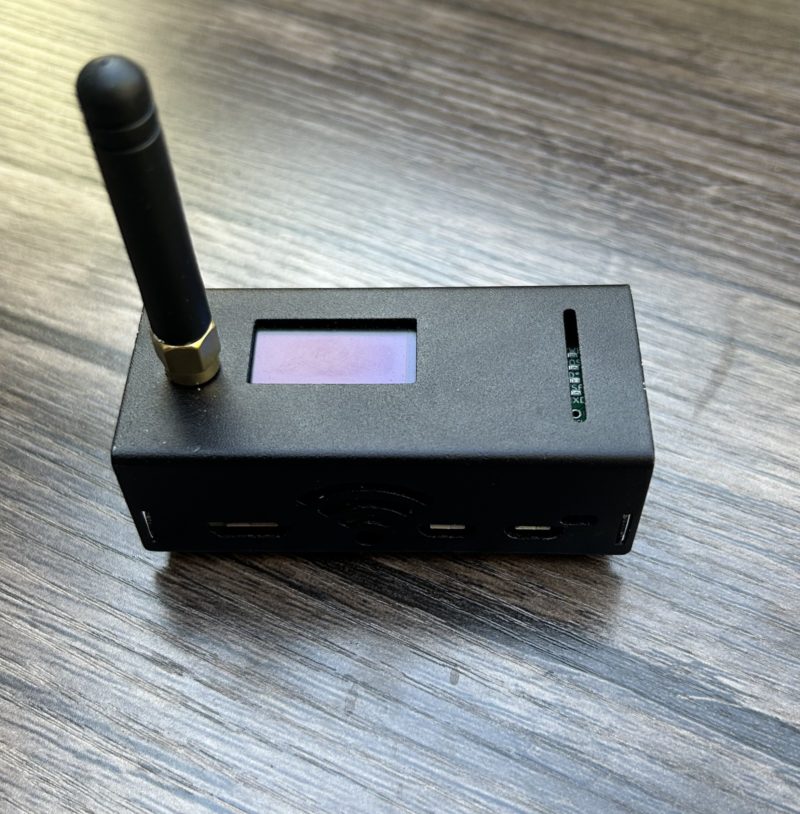Getting Started on DMR with a MMDVM Hotspot
I’ve been hearing about DMR more and more and I was curious to see how it all works. Not wanting to spend too much to check it out, I decided to start with a Baofeng UV-1801 (*more on this later) and an ebay hotspot kit, running Pi-star.
The hotspot kit was easy to assemble requiring only soldering of some header pins to the board and the antenna connector. No Raspberry pi was included, but I had one available from a previous project – a Pi Zero 2 W.
Next up, I downloaded the pi-star image to an SD card and booted it up. Configuring wi-fi proved a little tricky — you must create an additional configuration file (details on pistar.uk) with correct wifi credentials and add it to the SD card. If you don’t, you must use the direct wifi connection option which allows you to join a wifi network access point on the hotspot to configure it and connect it to your home internet wifi. In my tests, I had trouble with my computer seeing this ad-hoc access point consistently.
Configuration took a lot of time to understand as there are many items to consider and all of these settings were foreign to me.
After a bit of internet research and trial and error, I properly configured the Pi-star with call sign, radio id, brandmeister hotspot credentials, and appropriate frequency.
In parallel, I began building my ‘codeplug’ for the Baofeng. As I researched about this, I discovered the Baofeng UV-1801 that I had was the newest model and *cannot* be flashed with the popular OpenGD77 firmware, so I would be stuck with the stock firmware. Not having used OpenGD, I can’t say if this is a bad thing — but users seem to really like it much better than stock UI. Nonetheless, after some trial and error and more youtube videos, I managed to create/edit a Zone, Channel, Receive Group and add several ‘Contacts’ which correlated to Brandmeister talkgroups.
Initially, it was difficult to tell if everything wase set up correctly and in the process of configuring and reconfiguring the codeplug I think I may have accidentally keyed one of the talkgroups — it seems that when I plugged in my sync cable it automatically started to key up the first contact without any button presses? After a few minutes, I was able to key up the Parrot talkgroup and hear my own voice back, so all seemed well.
Then I noticed that I could see new calls coming into my chosen talkgroups on hose.brandmeister. network, but I wasn’t hearing them on the DMR. More research and discovered that hotspot will only broadcast recently connected talkgroups unless they are marked ‘static’ on your brandmeister dashboard. Essentially, your hotspot must subscribe to ‘static’ talkgroups to make them continually available to your radio.
Once this was done, everything worked well… for about an hour. Then I noticed I wasn’t getting any new calls coming through and in my pi-star dashboard DMR status was red. After much rebooting, reconfiguring and researching I determined that basically my MMDVM modem was crashing pretty much as soon as a new call came in that it needed to broadcast to my radio. Updates to pi-star and the MMDVM modem firmware didn’t resolve it. I went back to the boards and resoldered the header pins, but issue continues to happen.
I now believe that I must have received a faulty MMDVM board in the kit. It had worked fine for about an hour but now appears to crash everytime it needs to transmit. I will be ordering a replacement board and let you know is this resolved the issue.
In a future post, I’ll try to write up step- by-step instructions on how to get everything to work.
Update: Replacement kit arrived and quickly swapped in the new MMDVM leaving everything else set up as before. It works! Apparently I just got a bad board that started failing quickly. In my research to try to fix, it seems like quality control issue plague these boards so you may need to return, replace, or resolder poor boards before you get one that works well.
